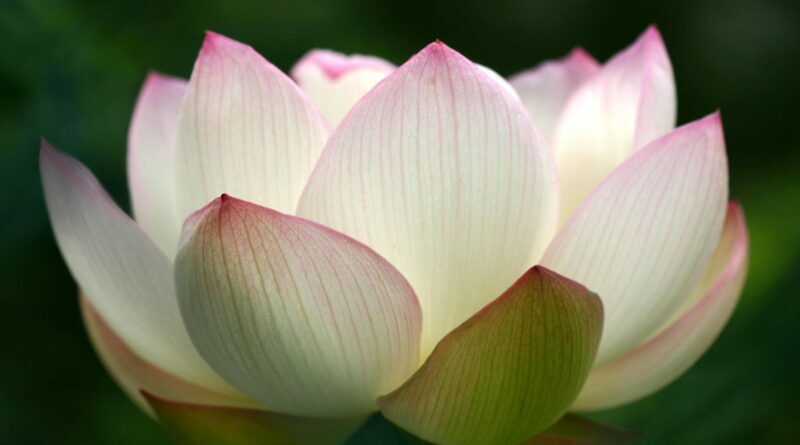THE PATH HAS A GOAL
The Path Has a Goal
When the Buddha taught the practice as a path, one of the implications is that the path goes somewhere. You follow the path because it takes you where you want to go. That would seem obvious, yet you read so many times that the path is the goal or that it’s a path without a goal. What kind of path is that? It’s not really a path. You wonder what’s going on.
Think about the story of the Buddha in his quest for Awakening: It was nothing but a story of paths and goals. First he mastered some very high levels of concentration that his early teachers taught as the goal. One was the dimension of nothingness; the other was the dimension of neither perception nor non-perception. Yet the Buddha realized that neither of these attainments was the goal for which he was looking. So he left those teachers and went off to try to find another path of practice that would take him to his goal: the deathless, a happiness that was free from change, free from aging, illness, and death.
So he tried the path of austerities for a while and that didn’t work, either — tried them for six whole years. Imagine the amount of investment he had in hoping they’d work. You don’t put yourself through that kind of torment unless you think there’s going to be a reward, or without developing a certain amount of pride around your powers of endurance. Yet after six years he realized that that path led nowhere, offered no reward. So he was willing to drop that investment, drop that pride, for the sake of something better.
That’s when he remembered the time when he was young and, while his father was plowing, he sat under a tree and entered the first jhana. The question came to his mind: Could this be the path? And his mind gave an intuitive response: Yes.
So he followed that path and he found that it involved more than just the practice of jhana, which is just one of the factors of the path. When he finally reached the deathless, he realized that the path leading him there had seven other factors. And he knew this because these factors, acting together, brought him to the deathless. It really did go where he wanted to go. So the first thing he taught was the path, and that was his central teaching for the rest of his life.
At one point in his later years he compared himself to a man who had gone through the jungle and found an old path. It was all overgrown, but he followed it and found that it led to an old capital city that had once been prosperous. The buildings were somewhat fallen down, but they were still livable. It was still a glorious city. So he went out of the jungle and told the king: Get your men to clear this path and it will take you to this wonderful, glorious city.
So the imagery throughout the Buddha’s teachings is that if you follow this path, it goes someplace. And the place where it goes is really special: free from aging, illness, and death; a happiness totally unconditioned.
But some people have raised the question: What about the Buddha’s earlier attainments, the dimension of nothingness, the dimension of neither perception nor non-perception? After all, the Buddha does point out in some of his other suttas that you can use these attainments as the path as well. Based on these attainments, you can develop the discernment that leads to release. What’s the proper attitude to have toward the Buddha’s earlier attainments?
First, remember that the Buddha’s early teachers had viewed these attainments as the goal. Once you got there, you just stopped. That was it. You continued practicing these things but that was it. You didn’t take them anywhere else. The Buddha, however, regarded them as a path to something further. In other words, he used them as a basis for further insight. Instead of seeing them as goals, he saw them as a path. He didn’t equate goals with path. He made a clear distinction.
It’s like somebody scrambling through a forest and finally arriving at a good road. But instead of following the road to a good place, he just lies down in the road. That’s what the Buddha’s earlier teachers were doing. You know what happens when you lie down in roads. You get run over. Aging, illness, and death can come barreling down the road at any time.
So when you get to the road, you follow it. You develop your concentration together with all the other elements of the path, and then you find that it really does lead to something special. So whatever you hear about goal-less paths or paths that are goals…. Just recently I read about a meditator who has been meditating for 30 years. He calls himself an experienced meditator and he says that he hasn’t gotten anywhere but that’s perfectly fine with him because that’s the whole point of meditation: realizing there’s nowhere to go. I don’t know which is more disheartening, the fact that he’s been such a lousy meditator for so long or that he feels so good about being a lousy meditator.
You can’t take people like that seriously. You can’t take them as guides. The Buddha taught skills that get results. That, he said, is the test for any kind of practice: the results it leads to. When he taught the Kalamas, he told them that when you see for yourself that following a certain practice leads to a blameless happiness, follow that practice. If you see that a practice is praised by the wise, follow that practice. If a practice leads to unskillful behavior rooted in greed, anger, and delusion; unskillful behavior in taking life, breaking any of the precepts, having wrong views, having greed, ill will, any of these things: Realize that that path of practice leads you to a bad place, so don’t go there. Follow the path that actually gives good results.
This whole pattern of cause and effect, action and result, is our guideline. It’s our test for what’s a good path and what’s not. So when someone is bragging that they have a path that doesn’t lead to results, you know that they’ve been following a bad path. You look for the path that does give results and doesn’t scoff at people who want results. It’s very sad when you hear about people saying, “Do you want happiness? An unconditioned happiness? Poor you.” What’s wrong with wanting a happiness that’s totally blameless, a happiness that doesn’t take anything away from anyone else? If you don’t have that kind of happiness, the only kind of happiness you’re going to find in life is the type that does take things from others.
I was reading a while back about a teacher who said he wouldn’t want to live in a world without suffering because he wouldn’t then be able to exercise his compassion — which is a very selfish wish: You want there to be people who are suffering so that you can enjoy being compassionate to them? Your sense of wellbeing needs to feed off other people’s pain? What kind of ideal is that? The best possible ideal is to follow a path leading to a happiness that doesn’t depend on other people’s suffering in any way, shape, or form. Then you can show that path to other people. If they feel so moved, they can practice it, too. That’s the way the Buddha taught, and there hasn’t been any improvement on it since.
So there’s nothing wrong with having a goal. As the Buddha said, the anguish that comes from realizing that you haven’t reached your goal is much better than the pleasure that comes from indulging in sensual pleasures. He talks about worldly or householder grief and renunciate grief. Householder joy and renunciate joy. Householder equanimity and renunciate equanimity. Householder grief is realizing that you’d like to have pleasant sights, sounds, smells, tastes, tactile sensations, and ideas, but you’ve got unpleasant ones. For most people, the antidote to that is to find pleasant ones, i.e., householder joy. But that’s not the path the Buddha recommends. He recommends that if you have householder grief, try to replace it with renunciate grief. In other words, even though things are uncomfortable outside, that’s not the real problem. The real problem is that you haven’t found a deathless happiness inside. The grief that comes when you reflect on the fact that you haven’t reached the deathless yet motivates you in the right direction: to follow the path leading to renunciate joy. That’s the joy that comes when you realize that the qualities you’ve developed inside really have led to Awakening. From there you go to renunciate equanimity, the peace of mind that comes when you’ve attained your goal.
People often have immature attitudes about goals, which is why some teachers say to drop all idea of goals when you meditate. That may be a useful attitude for short-term meditation, but for the long term it leads to experienced meditators whose experience of meditation is of going nowhere, and who develop a perverse pride around their nowhere as well. The long-term solution is to develop a mature attitude toward your goal, one that realizes that even though the path may take time, you can take comfort in the fact that it’s a good path and it’s headed in the right direction. This is the mature kind of attitude that really does yield results. There is a deathless happiness, and it can be found through your efforts. Don’t let anyone else tell you otherwise.



